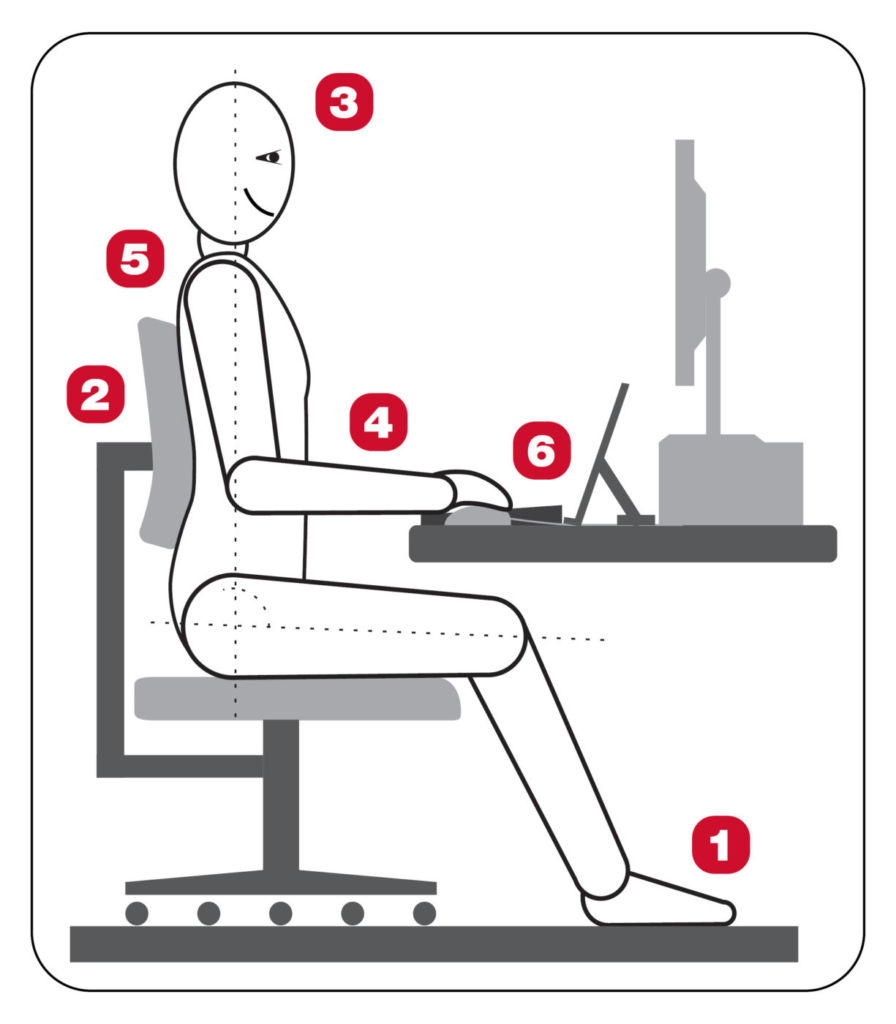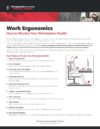Are you finding working or playing on your computer to be a pain in the neck — literally? Neck pain, back pain, carpal tunnel syndrome, and many other conditions can result from poor computer workstation habits.
Faulty computer habits can have painful consequences. Sitting too long at the computer without moving around or changing position can result in repetitive motion disorders and muscle strain.
“Abnormal postures and positions place undue stress and strain on our bodies,” explains Physical Therapist Nicole Barnes. “Making small adjustments can make a world of difference.”
Barnes, a certified ergonomic assessment specialist, emphasizes the importance of neutral posture, in which the musculoskeletal system is the most efficient. Ensuring you have a workstation that fits you is the best way to practice proper ergonomic habits. Even at-home workstations can be adjusted to support comfortable and ergonomically safe postures that in turn help facilitate productivity and success.
Follow these top 10 tips for workstation health:
1- FEET ON THE GROUND
Make sure that your feet are touching the floor or a footrest.
2- SIT UP STRAIGHT
Make sure that you sit tall with your weight on the buttocks and feet.
3- EYES LEVEL WITH THE SCREEN
A good rule is to make sure the top of your head is parallel with the top of the computer screen.
4- FOREARMS PARALLEL
Make sure that your forearms are parallel to the floor and your elbows are at a 90-degree angle.
5- SHOULDER BLADES SETTLED
Shoulder blades should be settled on the back of the ribs, not in an arched or hunched position.
6- CORRECT MOUSE POSITIONING
Place your mouse near the keyboard so you don’t have to reach for it.

7- REST YOUR EYES
Look away from the computer screen as often as possible and focus on distant objects.
8- TAKE A BREAK
Take a break from the computer at least every 20 minutes.
9- STRETCH AND MOVE
Do stretches such as head turns, shoulder rolls, and marching in place while seated.
10- WATCH FOR PROBLEMS
Pay attention to warning signs such as headaches, fatigue, muscle pain, or cramping and make adjustments early to prevent injuries.
Free Printables
Keep a reminder pinned up near your WFH station and practice these 10 tips to monitor your workstation Health: Workstation Health Printable
Start your journey to pain-free living today.
Physical therapists can help detect early symptoms associated with ergonomic hazards, and will work with you to develop an intervention program that includes stretching, exercise, and adjustments to the overall work environment. Our experts are committed to providing effective, efficient, and compassionate care to help you live a pain-free, active life.



